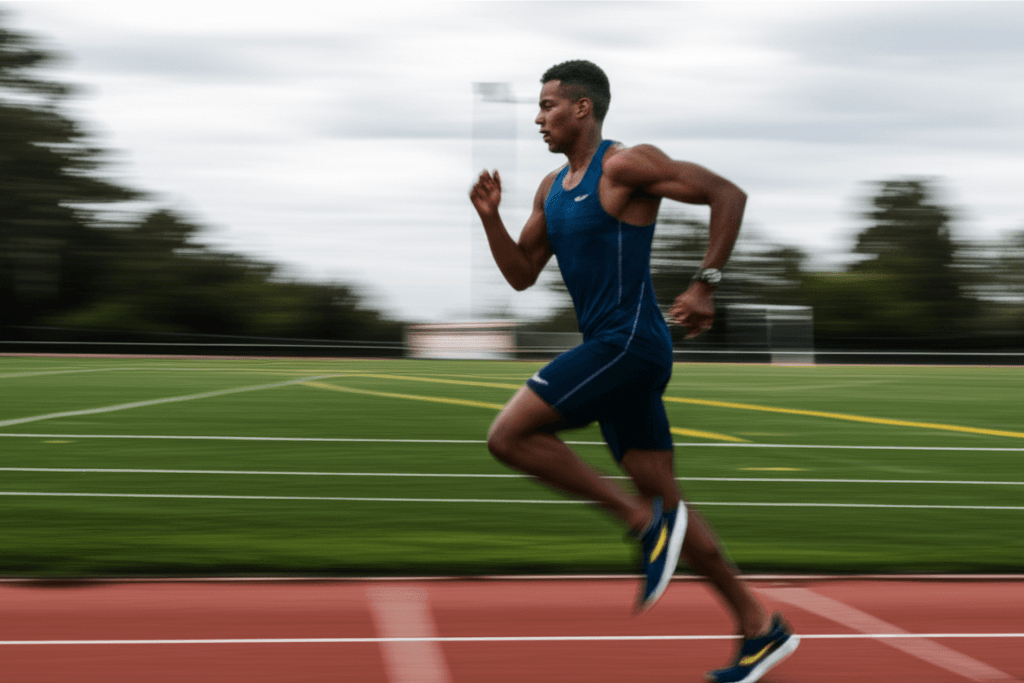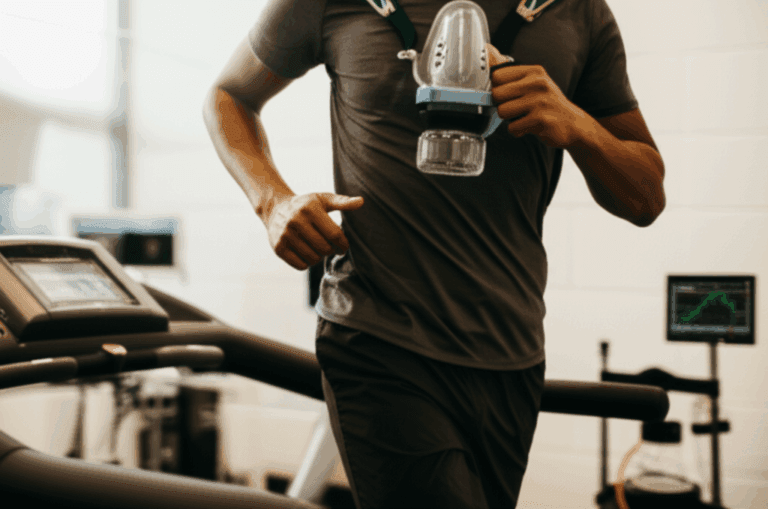The quest for enhanced athletic performance and improved health often leads us down challenging paths. One such path, increasingly popular in endurance circles, is VO2 Max training. VO2 max, short for maximal oxygen uptake, represents the maximum amount of oxygen your body can utilize during intense or maximal exercise. It’s widely considered the gold standard for measuring cardiovascular fitness and aerobic endurance. A higher VO2 max signifies a more efficient cardiovascular system, better athletic performance, and even a reduced risk of chronic diseases such as heart disease, diabetes, cancer, and stroke.
Intrigued by the promise of boosting my aerobic engine, I embarked on a three-week journey into the demanding world of VO2 Max training. This isn’t a long-term study, but a snapshot of what a short, focused block of high-intensity work can feel like and potentially achieve. Could just three weeks make a noticeable difference? I was about to find out.

Understanding VO2 Max and Why It Matters
Before diving into the sweat and struggle, it’s crucial to grasp what VO2 max truly represents. Imagine your body as an engine; VO2 max is its horsepower—the capacity it has to use oxygen when exercising. Specifically, it measures the milliliters of oxygen your body consumes per kilogram of body weight per minute (mL/kg/min). The more oxygen your lungs can take in, your heart can pump, and your muscles can use, the higher your VO2 max score will be.
This metric is vital not just for elite athletes, but for everyone. A robust VO2 max correlates with improved life expectancy and overall cardiovascular health. It indicates how effectively your heart, lungs, blood vessels, and muscles work together. For athletes, a higher VO2 max translates to the ability to sustain intense exercise for longer durations, recover more quickly, and perform better in endurance events. A 10% increase in VO2 max could decrease all-cause mortality risk by 15%.

My Motivation and Initial Fitness Level
My primary motivation for undertaking this three-week challenge was twofold: to experience firsthand the impact of high-intensity training on my perceived fitness and to potentially break through a plateau in my regular running routine. While I consider myself moderately active, my training often hovers in the comfortable “steady-state” zone. I rarely push myself to the true limits of my aerobic capacity.
Before starting, I had a baseline understanding of my fitness from regular runs, but no formal VO2 max test. Many modern smartwatches can approximate VO2 max based on heart rate and pace data, providing a useful, though not 100% accurate, estimate. Based on these estimates and my perceived exertion, I would classify my initial VO2 max as “average” for my age group. The goal wasn’t necessarily to hit a specific number, but to feel a tangible improvement in my ability to handle high-intensity efforts.

The 3-Week VO2 Max Training Protocol
To maximize the impact within a short timeframe, I focused on high-intensity interval training (HIIT), which is widely recognized as one of the most effective ways to improve VO2 max. Research suggests that even short bursts of high-intensity activity can lead to improvements in VO2 max within a few weeks. One study, for instance, found that six cycling HIIT workouts over two weeks significantly improved VO2 max in active young adults. Another study even revealed an 8.36% impact on VO2 max after just three weeks of short-term endurance training in elite university players.
My chosen protocol involved 2-3 high-intensity sessions per week, interspersed with easy recovery days or complete rest. This frequency is commonly recommended, with experts suggesting a maximum of two high-intensity sessions per week for most individuals to allow for adequate recovery.
Here’s a general outline of the workouts I incorporated:
Week 1: Building Intensity
- Session 1: Running Intervals
- Warm-up: 10-15 minutes easy jogging and dynamic stretches.
- Main Set: 4-5 repetitions of 3 minutes at a very hard effort (around 90-95% of maximum heart rate, or a pace I could sustain for about 5-8 minutes if going all-out).
- Recovery: 3 minutes of easy jogging or walking between efforts.
- Cool-down: 5-10 minutes easy jogging.
- Session 2: Cycling Tabata
- Warm-up: 15 minutes easy cycling.
- Main Set: Tabata protocol – 8 rounds of 20 seconds maximal effort cycling followed by 10 seconds rest.
- Recovery: 2-3 minutes easy cycling.
- Repeat the Tabata set 2-3 times with 5 minutes rest between sets.
- Cool-down: 10 minutes easy cycling.
Week 2: Increased Volume and Sustained Effort
- Session 1: Hill Repeats
- Warm-up: 15 minutes easy jogging, including some strides.
- Main Set: 6-8 repetitions of 60-90 second uphill sprints at maximal effort.
- Recovery: Jog or walk slowly back down the hill for recovery.
- Cool-down: 10-15 minutes easy jogging.
- Session 2: “4×4” Running Protocol
- Warm-up: 10-15 minutes easy jogging.
- Main Set: 4 repetitions of 4 minutes hard effort (90-95% of max heart rate).
- Recovery: 3 minutes of easy jogging or walking between efforts.
- Cool-down: 5-10 minutes easy jogging.
Week 3: Pushing the Limits
- Session 1: Longer Intervals (Running/Cycling)
- Warm-up: 15-20 minutes easy.
- Main Set: 3-4 repetitions of 4-5 minutes at 90-95% max heart rate.
- Recovery: 2-3 minutes of easy movement.
- Cool-down: 10 minutes easy.
- Session 2: Mixed Modality HIIT
- Warm-up: 10 minutes light cardio.
- Main Set: A circuit of bodyweight exercises (e.g., burpees, mountain climbers, jumping jacks) performed back-to-back with minimal rest, keeping heart rate elevated. For example, 30 seconds work, 10 seconds rest, through 5-6 exercises, repeated 3-4 times with 1-2 minutes rest between rounds.
- Cool-down: 10 minutes stretching and light movement.
Throughout these three weeks, I made sure to prioritize recovery, including adequate sleep and nutrition, as crucial components for adaptation. I also listened to my body, adjusting intensity or taking extra rest days when feeling overly fatigued.

Challenges and Adaptations
The initial sessions were a shock to my system. The sustained high intensity felt grueling, and my breath was ragged within the first minute of each interval. It was a constant mental battle to maintain the effort level, even for a few minutes. This type of training truly pushes you to your physiological limits, working the cardiorespiratory system at its maximal capacity.
However, by the end of Week 1, I started to notice subtle shifts. While still incredibly hard, the recovery periods felt slightly more effective, and I could sustain the intense efforts for closer to the target durations. This aligns with the understanding that the body adapts to stress, leading to improvements in cardiovascular efficiency. These adaptations include increasing the heart’s ability to pump more oxygenated blood and improving the muscles’ capacity to extract and use oxygen.
By Week 3, the mental fortitude required was still immense, but the physical sensations were different. I could feel my lungs working more efficiently, my breathing felt less panicked at peak effort, and my recovery between intervals seemed quicker. While a formal VO2 max test was not part of this personal trial, the subjective improvements in my perceived exertion and endurance were undeniable.

Perceived Benefits and Results After 3 Weeks
After three weeks of consistent and challenging VO2 max training, the most prominent perceived benefits were:
- Improved Endurance and Stamina: During my regular, easier runs, I felt I could maintain a faster pace with less effort. Long climbs that previously felt taxing became more manageable. This is a direct benefit of an improved VO2 max, allowing the body to produce energy more efficiently aerobically.
- Faster Recovery: Both within interval sessions and between training days, my body seemed to bounce back more quickly. This enhanced recovery capacity is a hallmark of improved cardiovascular fitness.
- Increased Mental Toughness: Consistently pushing into uncomfortable zones built significant mental resilience. Learning to tolerate the discomfort of high-intensity efforts is a skill that transfers to other areas of life and training.
- Enhanced Running Economy (Subjective): While not scientifically measured, my running form felt more fluid and less strained at higher efforts, suggesting my body was becoming more economical in its oxygen use.
While official physiological studies often look at longer training periods (e.g., 4-6 weeks for noticeable improvements in aerobic capacity if inactive, or up to 10-12 weeks for more significant VO2 max gains), some research suggests that even short-term high-intensity training can yield measurable improvements. A 2019 meta-analysis showed that HIIT sessions as short as 30 seconds over four weeks or less improved VO2 max, with greater gains seen in intervals closer to two minutes over 4-12 weeks. Given my prior activity level, these three weeks likely built upon an existing base, accelerating the perceived benefits.
Conclusion and Recommendations
My three-week dive into VO2 max training proved to be an intense but rewarding experience. While a short timeframe, it highlighted the body’s remarkable ability to adapt to specific stressors, even in a relatively short period. The subjective improvements in my endurance, recovery, and overall feeling of fitness were significant enough to convince me of the value of this type of training.
For anyone considering incorporating VO2 max training into their routine, here are a few recommendations based on my experience and research:
- Start Gradually: If you’re new to high-intensity training, begin with shorter intervals and fewer repetitions, gradually increasing duration and volume as your fitness improves. Workouts like walking intervals, stationary cycling with light resistance, or light jogging with walk breaks are excellent beginner-friendly options.
- Focus on Intensity, Not Just Duration: The key to VO2 max improvement is working at or near your maximum heart rate (90-95%) during the work intervals. Quality over quantity is paramount.
- Prioritize Recovery: High-intensity training is demanding. Ensure adequate rest days, sleep, and nutrition to allow your body to recover and adapt effectively. Most experts recommend no more than 2-3 high-intensity sessions per week.
- Listen to Your Body: Pay attention to signs of overtraining or excessive fatigue. It’s okay to adjust a workout or take an extra rest day if needed.
- Mix It Up: Incorporate different modalities (running, cycling, rowing, bodyweight circuits) to keep training fresh and challenge your body in varied ways.
While three weeks is a fleeting moment in a lifelong fitness journey, it can be a powerful catalyst for change. The physical and mental benefits I experienced serve as a testament to the effectiveness of focused, high-intensity VO2 max training in unlocking new levels of aerobic capacity.







